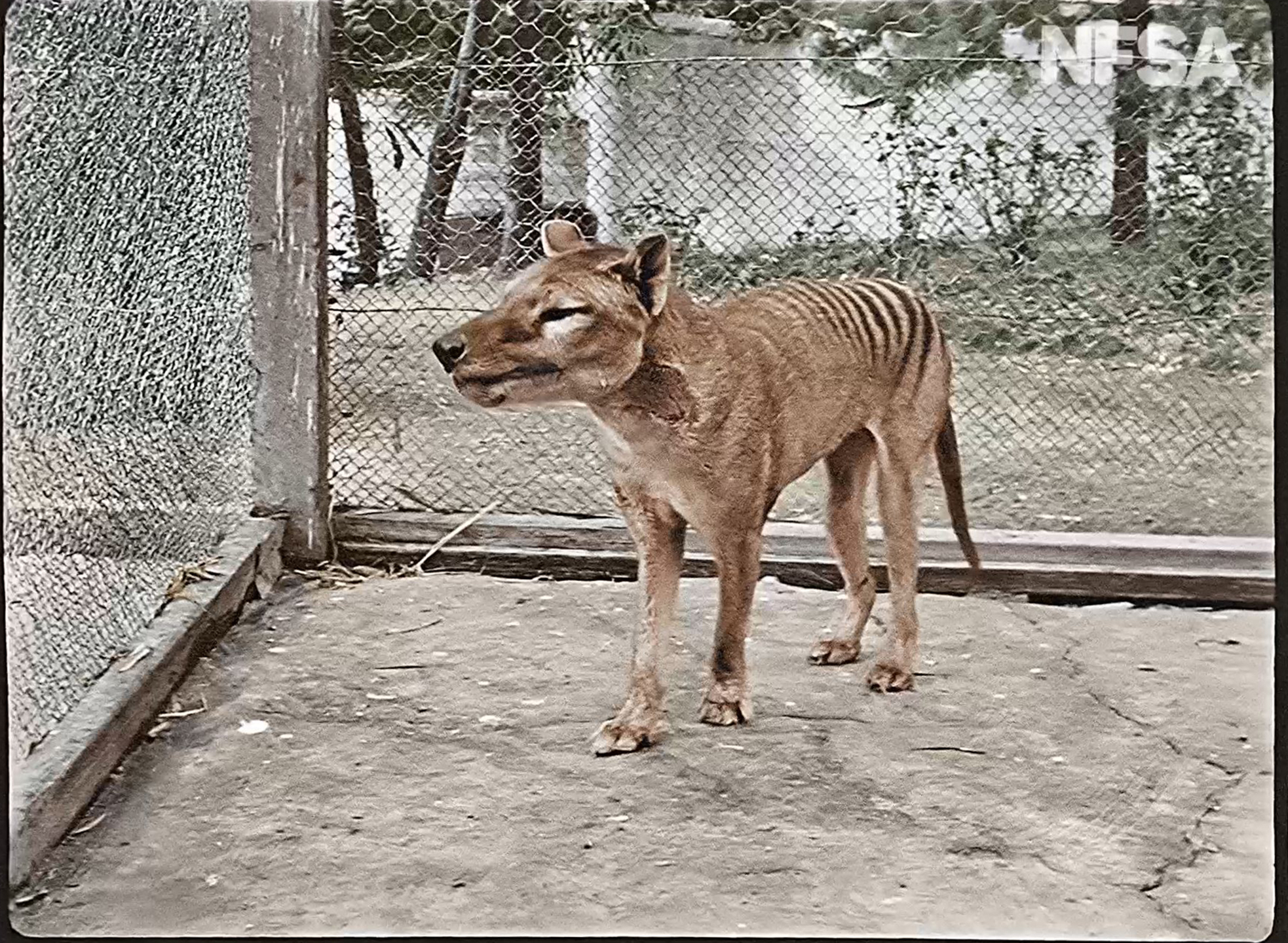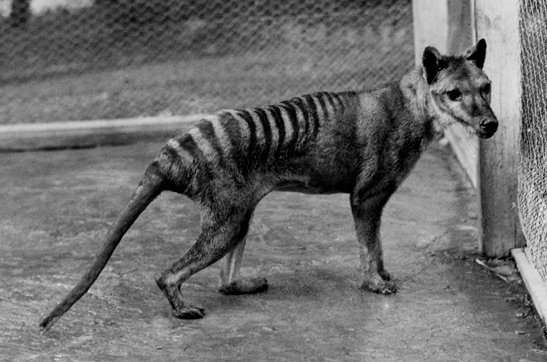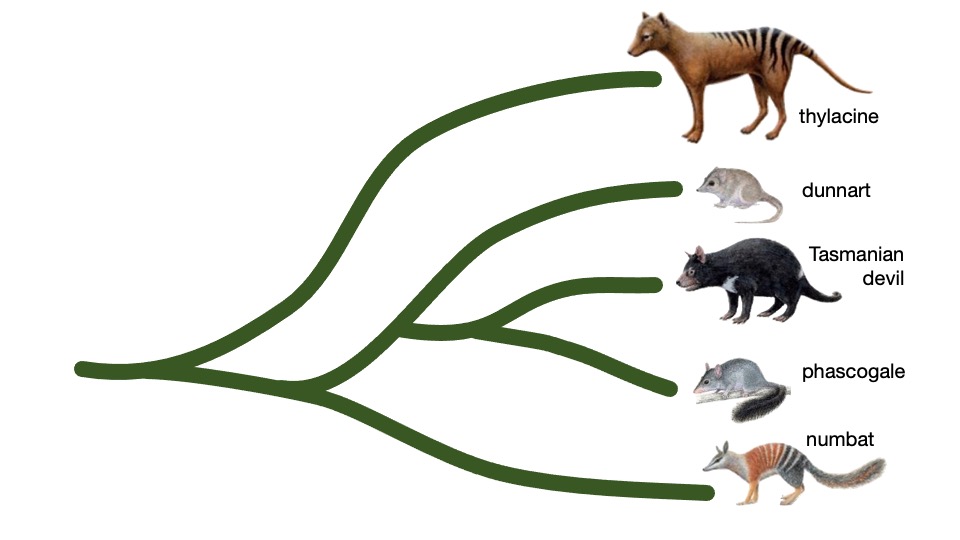
Sciences & Technology
Secrets from beyond extinction: The Tasmanian tiger

The reality of bringing back the Tasmanian tiger from extinction using its genome is now a step closer, but how will science make it happen?
Published 2 March 2022
Bringing extinct animals back from the dead is no longer the realm of science fiction but is fast becoming a scientific reality.
Around the world, research is ongoing to bring back key species using modern science advances in DNA sequencing, DNA editing and reproductive technologies.

Our research focuses on the marsupial, thylacine – also known as the Tasmanian tiger – which is in fact one of the best candidates for de-extinction.
The history of the thylacine is a sad one. The thylacine was broadly distributed across Australia before becoming extinct on the mainland around 3,000 years ago. But it continued to exist in Tasmania.
However, this unique animal was hunted to extinction by European settlers who thought it a threat to the Tasmanian sheep industry and the last known animal died in captivity in 1936.

Sciences & Technology
Secrets from beyond extinction: The Tasmanian tiger
The thylacine was completely unique among extant marsupials at the time. It had an iconic wolf or dog-like appearance, often described as a long dog with stripes, because it had a long, stiff tail and a big head.
A fully grown thylacine could measure 180 centimetres from the tip of the nose to the tip of the tail and stood 58 centimetres high. Its thick black stripes extended from the shoulders to the base of the tail.
Like the dingo, the thylacine was a very quiet animal.
It was known as Australia’s only marsupial apex predator. Our country’s modern apex predators – which now includes the likes of saltwater crocodiles and the dingo – form an extremely important part of the food chain and are often responsible for stabilising ecosystems.

The emergence of the fatal Tasmanian devil facial tumour disease is a clear example of what can happen in an ecosystem when sick animals are no longer preyed upon and removed from the population.
Thylacines would have helped control the spread of this deadly disease in Tasmania, and could have helped prevent the now near-extinction of the Tasmanian devil.
So how do you go about de-extincting these important animals?

Sciences & Technology
No bones about it, dunnarts crawl before growing a skeleton
If we look at the modern-day habitat in Tasmania, it has remained relatively unchanged. This means it provides the perfect environment to re-introduce the thylacine, enabling it to reoccupy its niche.
But bringing back an animal costs a lot of money. And a recent major philanthropic donation has provided 10 years of funding to establish the TIGRR lab(Thylacine Integrated Genomic Restoration Research lab) to enable the development of novel technologies for marsupial conservation and restoration.
While there is a broad ethical conversation to be had about de-extinction, the advances in marsupial science have immediate conservation benefits.
Our work will lead to much-needed technological advances in this space which include developing methods for creating marsupial stem cells to biobank species diversity and protect against species loss from events like Australia’s recent devastating bushfires.

Developing gene editing technologies means we can tackle issues like engineering cane toad toxin resistance into vulnerable marsupial species. While the work on marsupial cloning along with embryo growth and development can help marsupial breeding programs and species management strategies.
If we look specifically at the process to de-extinct the thylacine, there are nine key steps.
The good news is that this step is complete. We’ve released the thylacine genome which is basically a complete genetic blueprint or set of instructions on how to build a thylacine.

Sciences & Technology
Tasmanian tigers start to look like dogs in the pouch
This is an essential first step in any de-extinction project, and the likelihood of de-extincting the animal is completely reliant on the quality and accuracy of that genome.
To date, the thylacine represents the highest quality extinct genome for any species (and before you ask, yes, that includes the woolly mammoth and the dodo). However, this resource can still be improved.
Since we published the thylacine genome in 2017, advances in genome sequencing technology now provide many new options to further enhance the quality and build of the genome.
This is another one the team have already completed. We now have the sequence for several species which represent the thylacine’s closest relatives, which includes the dunnart or marsupial mouse.

The species with the most similar DNA will provide the living cells and template genome that can then be edited to transform it into a thylacine genome.
This is a large bioinformatics (or computational) project that compares marsupial genomes to identify all the differences that would potentially need to be edited into the hosts genome to create a ‘thylacine’ cell. This element is currently a major objective of the new TIGRR lab.
This step is now in development with the TIGRR lab and the Australian Research Council. We have derived stem cells for our model marsupial species, the fat-tailed dunnart, from which a lot of the techniques needed for our thylacine de-extinction will be developed.

Sciences & Technology
Extinct Tasmanian tiger now back in 3D
As part of TIGRR lab, we will establish methods that work in all marsupials. With this tool, we can effectively bio-bank diversity in ‘at-risk’ marsupial populations and protect against the loss of species that are threatened or endangered.
These steps require the development of assisted reproductive technologies (ART) for marsupials and is in development with the TIGRR lab. These techniques are required to use living stem cells to make an embryo and then successfully transfer it into a host species’ uterus.
This is where de-extinction efforts for marsupials have a distinct advantage over other mammals. All marsupials give birth to tiny young which complete development in the pouch while suckling milk.

Instead, as part of the de-extincting process, this can be replaced from a very young age with bottle feeding. It means that unlike other animals that require long and complicated gestation times, we can generate living animals in a range of host species and potentially without the need for a host at all.
These nine steps are likely to take a decade or more – but the work along the way will be of immediate conservation benefit for marsupials, as well as developing the technology necessary to bring back an iconic Australian animal that we hunted to extinction.
This research is being made possible through a philanthropic donation from the Wilson Family Trust. For more information about the donation and the work of the team, you can read more here: https://about.unimelb.edu.au/newsroom/news/2022/march/no-longer-science-fiction-$5m-gift-brings-de-extinction-of-the-thylacine-one-step-closer
Banner: AAP